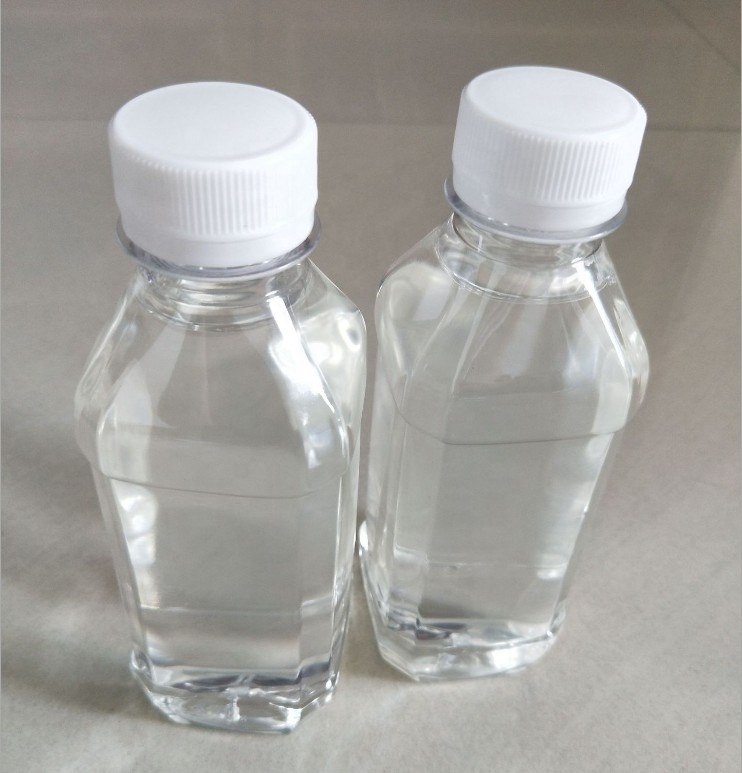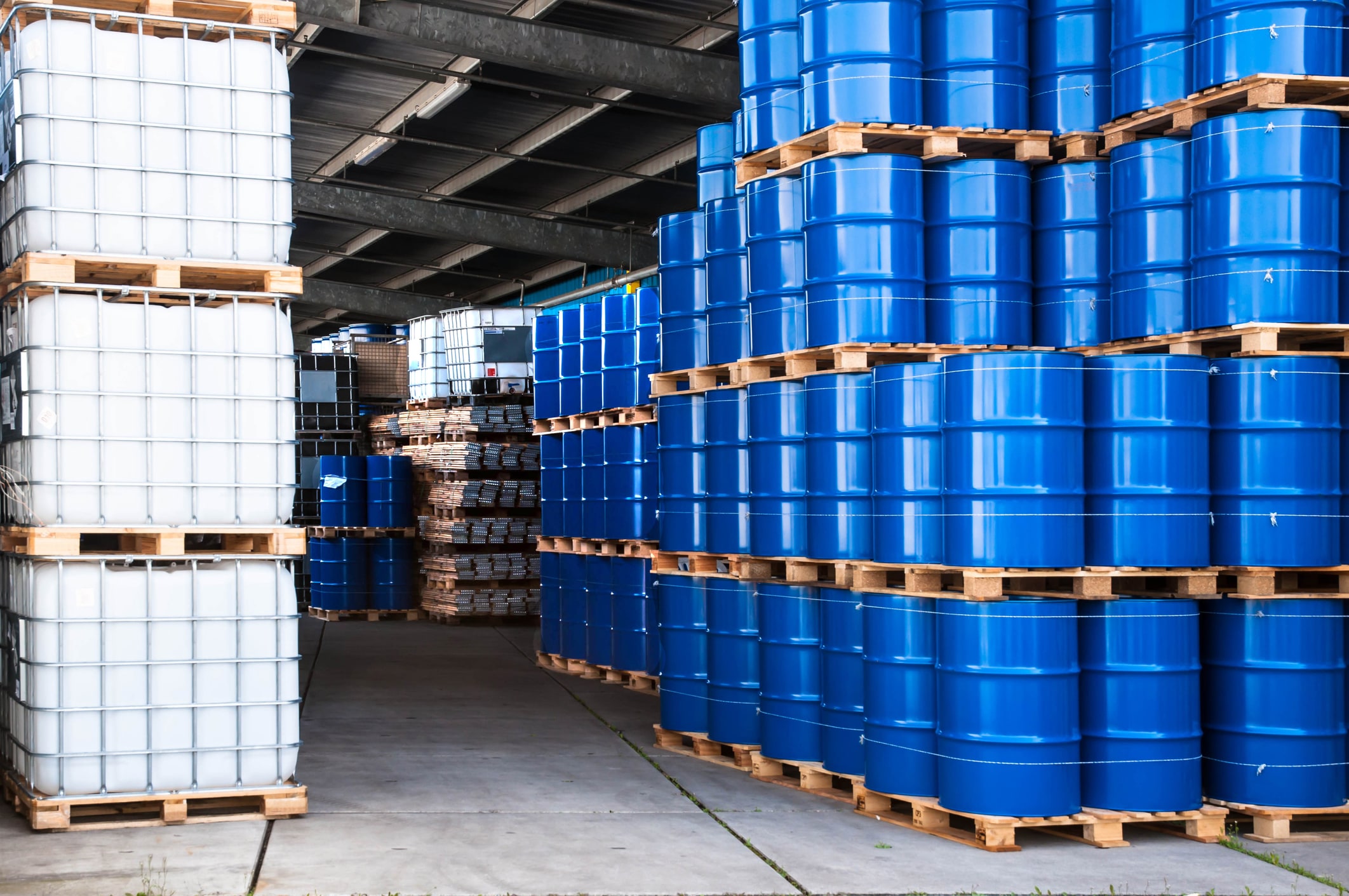
Description of Triethylene Glycol:
Triethylene glycol (also known as TEG, triglycol, and trigen) is a colourless, viscous, odorless non-volatile liquid with the formula C6H14O4. It is well known for its hygroscopic quality and its ability to dehumidify fluids.
TEG is non-flammable, mildly toxic, and considered non-hazardous. TEG is a member of a homologous series of dihydroxy alcohols. It is used as a plasticizer for vinyl polymers as well as in the manufacture of air sanitizer and other consumer products.
Triethylene Glycol (TEG) is a liquid chemical compound with the molecular formula C6H14O4 or HOCH2CH2CH2O2CH2OH.
Its CAS is 112-27-6. TEG is recognized for its hygroscopic quality and ability to dehumidify fluids. It is miscible with water and soluble in ethanol, acetone, acetic acid, glycerine, pyridine, and aldehydes.
It is slightly soluble in diethyl ether, and insoluble in oil, fat, and most hydrocarbons.
TEG is commercially produced as a co-product of the oxidation of ethylene at a high temperature in the presence of silver oxide catalyst, followed by hydration of ethylene oxide to yield mono, di, tri, and tetraethylene glycols.
The oil and gas industries use TEG to dehydrate natural gas as well as other gases including CO2, H2S, and other oxygenated gases.
Industrial uses include adsorbents and absorbents, functional fluids in both closed and open systems, Intermediates, petroleum production processing aids, and solvents.
TEG is used in the manufacture of a host of consumer products that include anti-freeze, automotive care products, building and construction materials, cleaning and furnishing care products, fabric, textile, and leather products, fuels and related products, lubricants and greases, paints, and coatings, personal care products, and plastic and rubber products.
It is non-flammable, mildly toxic, and considered non-hazardous. TEG is a member of a homologous series of dihydroxy alcohols. It is used as a plasticizer for vinyl polymers as well as in the manufacture of air sanitizer and other consumer products.
TEG is the third member of a homologous series of dihydroxy alcohols. It is produced in the Master Process by the direct hydration of ethylene oxide. TEG is co-produced with MEG and DEG.
It can cause material corrosion because of its acidic nature. Care should be taken to mitigate corrosion concerns when using triethylene glycol through appropriate material selection, use of coatings, and use of corrosion inhibitors. High-temperature environments can see high rates of corrosion with triethylene glycol.
Application of Triethylene Glycol:
The main uses for triethylene glycol are based upon its hygroscopic quality. It is used as a dehydrating agent for natural gas pipelines where it removes the water from the gas before being condensed and reused in the system. It is also a dehumidifying agent in air-conditioning units.
It is also used to make chemical intermediates such as plasticizers and polyester resins. It is an additive in hydraulic fluids and brake fluids, and TEG is also used as a solvent in many applications, including as a selective solvent for aromatics, and a solvent in textile dyeing.
Triethylene glycol also has mild disinfectant qualities and, when volatised, is used as an air disinfectant for virus and bacteria control.
This product is often used to dehydrate natural gas and as a cement grinding aid.
Triethylene glycol is a chemical compound with the chemical formula C6H14O4 that is categorized as alcohol. At room temperature, it is a liquid. It is clear, has a mild odor, and is not extremely viscous. Triethylene glycol is soluble in water.
Triethylene glycol can cause material corrosion because of its acidic nature. Care should be taken to mitigate corrosion concerns when using triethylene glycol through appropriate material selection, use of coatings, and use of corrosion inhibitors. High-temperature environments can see high rates of corrosion with triethylene glycol.
The major use of TEG is in the drying of natural gas due to its strong hygroscopic properties. TEG is also used as a chemical intermediate in the production of vinyl plasticizers, polyester resins, adhesives, and a variety of solvents and cleaners.
Uses:
- Antifreeze
- Coolants
- Chemical intermediates
- Gas dehydration and treating
- Heat transfer fluids
- Polyester resins
- Solvents
The use of Lyondell Basell Triethylene Glycol in the following applications is prohibited:
– Aerosol applications such as theater fogs, linen sprays, pepper sprays, air sanitizers
– Chafing fuels for warming foods
– Deicer applications for use on roadways and pedestrian walkways.
Triethylene glycol is a chemical compound that is organic in nature. It is a part of the product category of ethylene glycol.
It is a fluid which has properties such as water solubility, viscosity, transparency and is odorless. It is beneficial in applications that involve the need for low volatility as compared to diethyl glycol.
It is also useful when high molecular weight and high boiling point are essential. It is also regarded to have moisture-controlling abilities that are advantageous for hygroscopic implementations.
It is identified as a significant application in the context of dehydration of natural gas. It can also be used for removal of moisture in air conditioning units. The fundamental role of triethylene glycol in the petroleum industry renders it a crucial commodity to be assessed on in the market globally.
Industrial Applications:
The primary use of ethylene glycol is for polyethylene terephthalate (PET) plastic resin used to make beverage containers for soda, water, and juice, and polyester fiber for clothes, upholstery, carpet, and pillows.
It has a variety of other industrial uses, including:
• The manufacture of fiberglass used to make products such as jet skis, bathtubs, and bowling balls.
• The manufacture of ink for ballpoint pens and other inks. Ethylene glycol helps increase ink viscosity and makes it less likely to evaporate.
• Heat transfer fluids such as industrial coolants for gas compressors, heating, ventilating, air-conditioning systems, and ice skating rinks.
It gives industrial coolants properties that help them flow through cooling systems while withstanding extreme hot and cold temperatures.
Examples of applications:
TEG is used as a plasticizer for vinyl. It is also used in air sanitizer products, such as “Oust” or “Clean and Pure”. When aerosolized it acts as a disinfectant.
Glycols are also used as liquid desiccants for natural gas and in air conditioning systems. It is an additive for hydraulic fluids and brake fluids and is used as a base for “smoke machine” fluid in the entertainment industry.
Furthermore, TEG is used by the oil and gas industry to “dehydrate” natural gas. It may also be used to dehydrate other gases, including CO2, H2S, and other oxygenated gases.
It is necessary to dry natural gas to a certain point, as humidity in natural gas can cause pipelines to freeze, and create other problems for end-users of the natural gas.
TEG is a key ingredient in automotive antifreeze and coolant, to help keep a car’s engine from overheating and from freezing in the winter.
It is a major component of deicing solutions used in a variety of transportation applications, including cars, boats, and aircraft, as well as on airport runways during the cold winter months.
TEG Global Market:
Global Triethylene Glycol (TEG) Market, By Application (Natural gas dehydration, Solvents, Plasticizers, Polyurethanes, Humectants, Polyester Resins, Others), End-User Industry (Automotive, Agrochemicals, Food and Beverage, Textile, Personal Care, Pharmaceuticals, Detergents, Others), Countries: (U.S., Canada, Mexico, Brazil, Argentina, Rest of South America, Germany, France, Italy, U.K., Belgium, Spain, Russia, Turkey, Netherlands, Switzerland, Rest of Europe, Japan, China, India, South Korea, Australia, Singapore, Malaysia, Thailand, Indonesia, Philippines, Rest of Asia-Pacific, U.A.E, Saudi Arabia, Egypt, South Africa, Israel, Rest of the Middle East and Africa) Industry Trends and Forecast to 2027.
Properties:
| Form | liquid |
| Appearance | clear |
| Molecular weight | 150 |
| PH | 70 |
| Boiling point 760 mmHg | 288 cd |
| Flashpoint, PMCC | 166 cd |
| Melting point | -7 cd |
| Specific gravity 20/ 20 cd | 1.124 |
| Specific gravity 20/ 20 cd | 1.4539 |
| Vapor pressure,mmHg | 1.12420cd < 0.01 |
| Viscosity,cst 40 cd | 17,39 |
| Aldehyde as FA,ppom | 0,7 |
| Acidity, ppm | 14 |
Benefits:
Versatile intermediates
Low volatility
Low boiling point
TETRA EG is completely miscible with water and a wide range of organic solvents.
How is it stored and distributed?
Triethylene glycol can be stored and transported in stainless steel, aluminum, or lined tank cars, tank trucks, or 225 kg drums. It has a specific gravity of 1.125 and a flashpoint of 168 °C (closed cup) and is not classified for transport by road, sea, or rail.
Precautions for safe handling Avoid contact with skin and eyes. Avoid inhalation of vapor or mist. Conditions for safe storage Keep the container tightly closed in a dry and well-ventilated place.
Packaging:
- Bulk in seagoing vessels/barges
- Bulk in flexitank cars
- Bulk in road tank cars
- Bulk in iso tank containers
- steel drums
- Other packaging solutions are possible by agreement.
Specification:
| appearance | colorless |
| Purity | 99.8 wt % min |
| MEG | 0.05 wt % max |
| TEG | 0.05 wt % max |
| Water | 0.05 wt % max |
| Colour (pt-Co) | 10 max |
| Specific Gravity, 20/20 C | 1.1175-1.1195 |
| Boiling Range at 0.1013 Mpa | ————- |
| 5% vol | Min 242 C |
| 95% vol | Max 250 C |
| Acidity (as acetic acid) | 50 mg/kg max |
| Ash | 50 mg/kg max |



